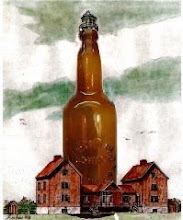by Jon Hill - The craft beer revolution of recent decades was built on ales. From stouts and porters to IPAs, to whites, blondes and reds, and even Belgian dubbels, tripels and quads, most craft beer styles hail from this larger and more ancient branch of the beer family tree.
Lagers, by contrast, have long been the territory of the big corporate breweries in St. Louis, Milwaukee, and Golden, Colorado. With a reputation for being pale, fizzy and bland, the overwhelmingly popular American adjunct lager represents for many craft beer devotees the antithesis of craft brewing, not worthy of emulation.
But this is the year of the lager, at least according to some beer bloggers. Just like last year. And the year before that. It seems that craft lagers are perpetually on the verge of going mainstream, drawing the macro-drinking masses into the fold.
There are some obvious obstacles that may explain this delay. Lagers are temperature-sensitive and technically difficult to produce, achieving widespread commercialization only after the introduction of refrigeration in the late 19th century. The modern industrial brewery is a model of precision and efficiency, if not inspiration, achieving economies of scale unattainable in a microbrewery. But lagers also face the ingrained consumer preferences of the beer snob, Joe Six-pack, and everybody in between. Most American lager fans expect a level of “drinkability” that may never be met by microbrewers. Meanwhile, the appetite for a pale adjunct lager in a craft beer scene obsessed with triple hopped IPAs and funky sours is not guaranteed. The American craft lager remains a style in search of an audience.
Some brewers have made classic lagers over the years: Oskar Blues, Victory, Lagunitas, and Sixpoint to name only a few. Others, like Jack’s Abby in Framingham, Massachusetts, have dedicated their entire production to high-quality craft lagers. But these are the exceptions that prove the rule. Most craft lagers remain decidedly “crafty” in preparation and presentation, featuring high hop bitterness, niche packaging, and narrow distribution not intended for mass markets. Rarely, if ever, have craft lagers taken on the macros on their own turf.
Sunday, April 15, 2018
Subscribe to:
Post Comments (Atom)



No comments:
Post a Comment